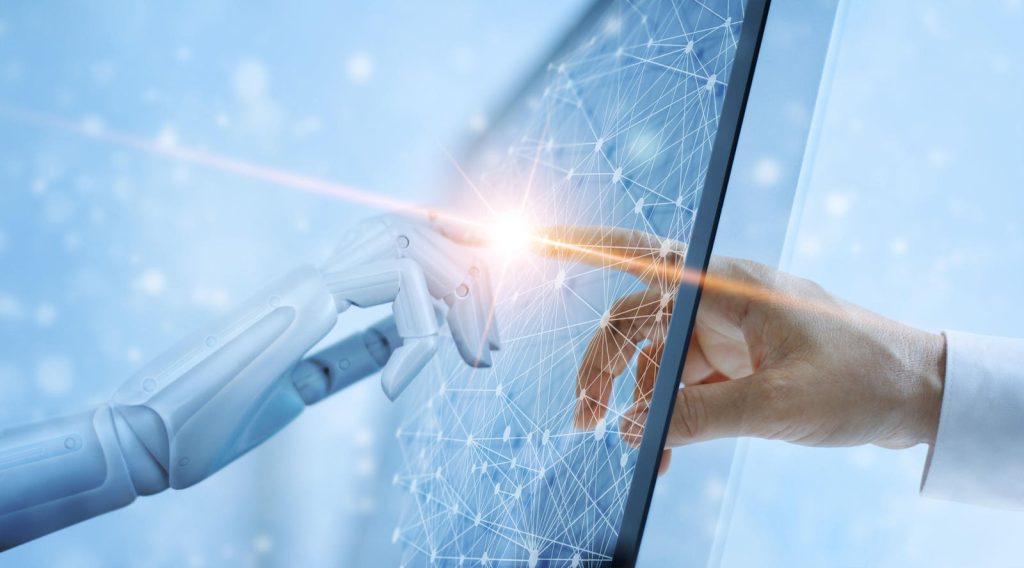Founder and CEO of Valuematrix.ai. A Nasscom Deeptech and CII Mentor who’s associated with many startups in the AI and SaaS space.
Today, we have access to multiple job pools, such as Indeed, Naukri and LinkedIn, making it easy to find potential candidates as well as open job roles. However, successfully recruiting and acquiring employees is a different game altogether.
In today’s world of human and AI interaction, communication has been disrupted by emerging technologies. Artificial intelligence is rapidly transforming the recruitment landscape, with 43% of HR professionals integrating AI into their hiring procedures. This swift adoption stems from organizations recognizing AI’s potential to enhance recruitment. The AI market will grow beyond $1.8 billion by the end of this decade, cementing its place in our future.
Human resources, as its name suggests, is a field exclusive and custom-made for human-centric functions and operations in a workplace setting. But would a human touch in an AI-driven world be too much to ask?
Businesses Leveraging The Power Of AI
Historically, unconscious bias has emerged as the major impediment when it comes to adhering to fair hiring practices. With the incorporation of AI in hiring processes, assessments were standardized and subjective judgements were eliminated. Through extensive data analysis, AI algorithms discern patterns, enabling impartial evaluations based on qualifications and performance. As a result, a more diverse and inclusive recruitment process benefits organizations and society at large.
Enterprises, notably giants like Vodafone, KPMG, BASF and Unilever, are increasingly adopting AI-driven recruiting tools. These innovations turbocharge the applicant selection process, revolutionizing speed and efficacy in handling high volumes of applications. For example, Unilever’s comprehensive utilization of AI in its recruitment process and their cutting-edge chatbot engages candidates, delivering tailored responses and invaluable feedback. With AI-driven analysis, Unilever pinpoints prime candidates for every role, streamlining hiring processes and elevating decision-making quality. Moreover, AI uncovers skill gaps, opening doors for employee growth and development and demonstrating Unilever’s commitment to progress in recruitment.
IDC’s research predicted that in 2023, 60% of the world’s top 2,000 companies will adopt AI and machine learning (ML) tools for end-to-end employee life cycle management. The study anticipates that in 2024, 80% of the global 2000 organizations will employ AI or ML-powered “managers” to hire, fire and train employees.
We can witness the generous usage of AI all along, but we must also not forget to lay emphasis on the importance of human interference and the issues that can arise in the absence of the same.
Balancing Human Touch With AI Efficiency
Recruitment, deeply rooted in human connection and personalization, is inconceivable without a human touch. A recruiter’s intuition in identifying the right fit, emotional intelligence in matching candidates with companies, and decision-making expertise are the foundations of recruitment. When combined with AI’s unbiased screening and robotic efficiency, it transforms the future of hiring. Data indicates that the fusion of human judgment with machine efficiency is poised to double recruiters’ productivity, ushering in a new era of recruitment effectiveness.
The human touch remains indispensable in the critical recruitment process such as conducting interviews, offering insightful feedback and finalizing hiring decisions. While AI adeptly parses resumes and filters candidates based on defined criteria, it falls short in gauging cultural alignment and long-term commitment. Once AI handles the initial recruitment stages, the human touch guides the process forward. Human recruiters step in to assess intangibles that shape organizational success.
A survey conducted by Harvard Business School revealed that a striking 88% of HR executives discovered that their automated tools were inadvertently turning away highly qualified candidates. Often, these applicants lacked only a few specific skills or had experienced employment gaps due to entirely valid reasons. These nuanced situations elude AI’s comprehension, as its operation is contingent on algorithms devised by humans. This underlines the irreplaceable value of human judgment in the recruitment process.
Furthermore, candidates anticipate and value human interaction, whether interviews occur in person or through a screen. Following multiple interview rounds, a human recruiter delivers empathetic feedback if a candidate faces rejection. Candidate experience is integral to recruitment, and augmentative technology cannot replicate a human professional’s personal touch. While technology aids in data-driven candidate assessment, the ultimate decision on the most suitable candidate rests with human recruiters.
Undoubtedly, AI can effectively address various recruitment tasks, but its capabilities have limitations. For example, AI excels in background verification across extensive data sets, yet assessing a candidate’s personality and alignment with the organizational culture has been largely resting with humans, but we suspect not for long. Moreover, engaging passive candidates and identifying internal talent historically fall under the purview of human intervention. AI, however, can now also serve as a sort of digital gut-checker that assists recruiters in making well-informed decisions.
Conclusion
The future of AI envisions a symbiotic relationship between humans and machines, with AI enhancing human capabilities and allowing individuals to focus on higher-level tasks that necessitate human ingenuity and expertise. Nevertheless, it is vital to recognize that AI cannot supplant human touch, which brings irreplaceable elements like emotion, empathy and ethics to HR and people-related functions.
It is imperative to perceive AI as a facilitative tool, not a complete replacement for human intervention. Undoubtedly, AI has streamlined HR operations, offering data-driven insights. A balanced approach that harnesses the strengths of both AI and human intelligence promises more efficient HR practices and a more empathetic work environment. This collaborative synergy will define the future of HR, maximizing productivity while preserving the essence of the human touch in workplaces.
Forbes Technology Council is an invitation-only community for world-class CIOs, CTOs and technology executives. Do I qualify?
Read the full article here










